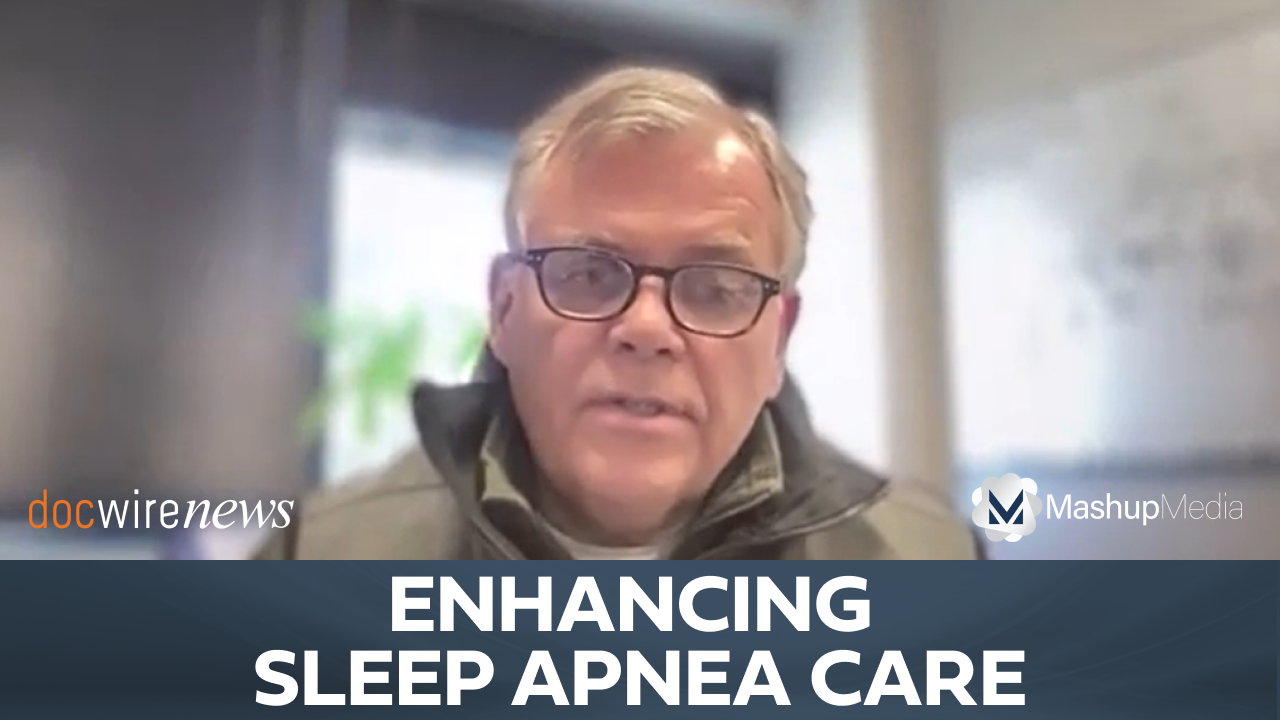Dr. Anne Marie Morse Recaps SLEEP 2024
By Anne Marie Morse, DO, Rob Dillard - Last Updated: July 1, 2024SLEEP 2024 took place last month in Houston, Texas, and featured the latest in sleep and circadian rhythm research. DocWire News spoke with neurologist and sleep expert Dr. Anne Marie Morse, who was in attendance at the meeting. Dr. Morse recapped the most notable events from SLEEP 2024, talked in-depth about the novel research she found most compelling, and listed upcoming sleep conferences of note that she has her eye on.
SLEEP 2024 featured the latest advancements in sleep science and medicine. What were some of the most notable events from the meeting?
I think when you look at what occurred at SLEEP 2024, it is really quite incredible to realize that this was the largest SLEEP conference since COVID. Over 5000 attendees brought the richest data to help us understand the current and future directions of sleep medicine.
Looking at what the future directions are, there are some really hot topics that we must have a discussion about. First and foremost, what has been in the news? We’re talking about Wegovy, Ozempic, Zepbound. We’re talking about the GLP-1 agonists. You may be asking yourself, “What does this have to do with regard to sleep medicine?” Well, Eli Lilly has their phase 3 data, their top-line data are available currently, and they are going to be revealing them soon at one of the upcoming diabetes endocrinology conferences and discussing this connection in exquisite detail.
However, I was privileged to be a part of several different CME events where we started to have some of the discussion around the role of this medication in obstructive sleep apnea. We’re talking about tirzepatide and its role in regard to the treatment of obstructive sleep apnea.
What we know is that there were several phase 3 components to this study where they looked at individuals with moderate-severe obstructive sleep apnea, who were overweight to obese with and without CPAP. What we’ve identified is that there was significant reduction in the overall AHI, the Apnea Hypopnea Index. Some may say, “Well, you’re causing weight loss, of course you saw a reduction.” However, most studies are showing that with every 1.0% change in body weight, we see a 2.6% reduction in AHI. We saw more of a significant impact than that. In addition, we saw that those who were using CPAP experienced even more of a benefit.
This is something that is really important for us to take note of because when we talk about the use of CPAP in adults, there’s the question as to whether or not it is actually associated with weight loss versus weight gain. For those individuals who are using CPAP adherently but are experiencing that weight gain, this is giving us another additional tool in our tool belt. One of the things that I’d like to share is that we shouldn’t stop there, just thinking about weight loss and its role in the treatment of obstructive sleep apnea. When we’re talking about GLP-1 agonism, it is really important to understand the physiology doesn’t stop there. It has both direct and indirect interactions with the orexin system both centrally and peripherally. Orexin is the Hail Mary in regard to what we’re talking about and being able to promote weightfulness, and it also has a significant role in sleep stability.
So, we’re really looking at a multifactorial approach to treating obstructive sleep apnea, and that really is going to be a game changer and an additional tool in our tool belt that is really going to benefit the majority of individuals with obstructive sleep apnea. In the United States, 75% of adults are overweight or obese, which means it’s more than likely that if you’re treating someone with obstructive sleep apnea, they may be also struggling with really managing their weight.
As it pertains to sleep disorders that perhaps don’t garner as much mainstream attention, can you talk about some interesting research that was presented?
Some of the conditions that are not getting the attention that they probably do deserve because they’re dismissed as rare conditions, some of those would be our central disorders of hypersomnolence. What am I talking about? Narcolepsy and idiopathic hypersomnia are some examples of these. Tremendous data that were put out at this conference that are giving a lot of hope of expanding opportunity to not only better understand these conditions, what the true prevalence of these conditions is, but also life-changing treatment options that are on the horizon.
So, we saw coming out of France, Yves Dauvilliers, looking at the utilization of sodium oxybate, twice-nightly sodium oxybate for the treatment of idiopathic hypersomnia. We know in the United States we have the mixed salts oxybate that has been already approved for the treatment of idiopathic hypersomnia with very substantial benefit on the idiopathic hypersomnia severity scale, as well as the Epworth Sleepiness Scale.
However, with that pivotal study, there were not any objective data to demonstrate the degree of improvement. With Yves’ study, what we see is that he performed a randomized, control trial, which is different because this was a double-blind, randomized, withdrawal trial for the pivotal trial. He did a randomized, controlled trial and included not only those subjective scales, but also the Maintenance of Wakefulness Test. He saw the same degree of robust improvement that we’ve seen with the mixed salts oxybate.
This is really important because he not only replicated this utilizing sodium oxybate for the subjective, but the degree of improvement was greater than 15 minutes on the Maintenance of Wakefulness Test, a normalization of the ability to maintain wakefulness. When we’re seeing that we’re improving the Epworth, the idiopathic hypersomnia severity scale that is looking at the full 360 degrees of a person’s day, and demonstrating subjective improvements and objective improvements, that is something that is extraordinarily promising. I’ll be looking forward to future research to see how the once-nightly sodium oxybate may be making a difference in that patient population as well.
The excitement doesn’t stop there, however. As a member of the board of directors for the Sleep Research Society Foundation, I had the privilege of being able to chair one of our industry roundtables talking about central disorders of hypersomnolence. With that, I was alongside some of my esteemed colleagues like Tom Scammell, Emmanuel Mignot, Yves Dauvilliers, and many others from across the globe. We were able to review some of the recent evaluations that David Plant, who also was present, had done looking at the Wisconsin Sleep Cohort.
Looking at the Wisconsin Sleep Cohort, there was really robust evaluation of what the possible sleep considerations that may be occurring in this population are. Researchers performed a really detailed review of this and found it is likely that about 1.5% of individuals in the Wisconsin Sleep Cohort met criteria for idiopathic hypersomnia. This is striking. We call idiopathic hypersomnia and narcolepsy rare diseases because we believe that they are representing fewer than one in 2000 individuals. However, when looking at statistics of potentially 1.5%, we’re approaching the prevalence that is similar to conditions like epilepsy. I think that’s probably more accurate.
Now, what really stole the show at this year’s SLEEP conference is the orexin agonist. We see that this is the race, the competition that we’re now evaluating about a dozen different companies to be able to achieve getting to that finish line. The current leader in a race is definitely looking at the TAK-861, where it has completed its phase 2 study and now is entering into phase 3. This was the first time of actually being able to look at the robust data that they have from phase 2, which are demonstrating an amazing improvement in excessive daytime sleepiness and cataplexy.
Remember, for TAK-994 there was an early termination of the study because of concern about some liver toxicity (this was published in the New England Journal of Medicine last year). We had seen groundbreaking data that we have never seen before for any narcolepsy treatments. What do I mean by that? We saw normalizations of Maintenance of Wakefulness Test; we saw that people were achieving complete cataplexy freedom. When you talk to some of the investigators who participated in these trials, they would say, “Our patients are saying they no longer have narcolepsy.” They were experiencing a normalization. It was devastating to see TAK-994 end its study. However, it is inspiring to see that TAK-861 is demonstrating very similar efficacy with great safety profiles.
Not too far behind TAK-861 is ALKS 2680, which is another orexin-2 agonist that just finished its phase 1 data and will be entering into phase 2. With a single dose, it demonstrated some really robust, profound improvements with a really satisfying safety profile that is going to lead to likely a successful phase 2.
With these medications so close to being able to participate in phase 2 and 3 trials, it’s anticipated we may be seeing these drugs on the market as early as 2027, 2028. A sleep doctor may be saying, “Well, I don’t really see that much narcolepsy.” I would say, one, make sure you’re looking for it because I guarantee you it’s in your practice. Number two, what we know is that with the role of orexin, it far exceeds just the treatment of central disorders or hypersomnolence. We know that it’s likely going to have a role in circadian rhythm disorders and sleep disorder breathing, so when these drugs come to market, they are going to be blockbuster drugs that are going to transform our clinical practice and hopefully transform our patients’ lives.
Looking ahead, are there any other upcoming sleep conferences that you have your eye on?
When looking at upcoming sleep conferences that people get excited about, it really depends on what discipline you’re coming from. For most sleep docs, the big one every year is SLEEP, which will be held in Seattle next year. However, in 2025 we also are going to see the World Sleep Society’s Congress in Singapore. That event draws a really great international presence, examining science from all over the globe, and it should not be missed.







 © 2025 Mashup Media, LLC, a Formedics Property. All Rights Reserved.
© 2025 Mashup Media, LLC, a Formedics Property. All Rights Reserved.